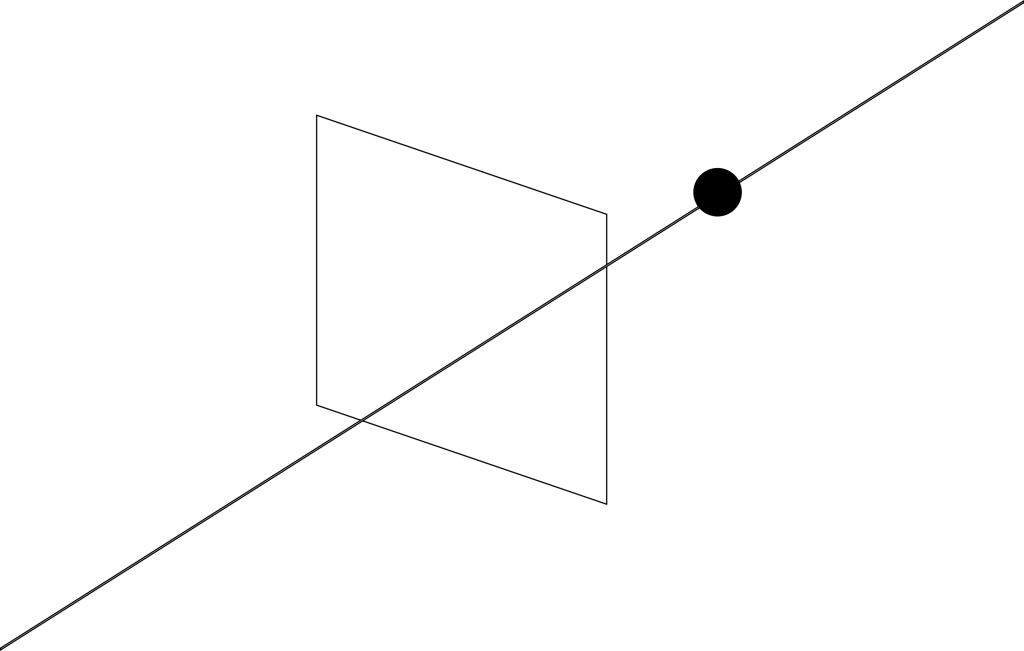As a kid I loved multiplication. Dividing was hard—because I didn’t know what to do if the remainder wasn’t zero—but I managed to do okay in my tests. It was only in high school that I met the Cartesian product. Tensor products had to wait till my undergrad.
Mathematics is full of products: scalar product, wedge product, inner product, outer product, and god knows what else. To mathematicians, they are as different as sneakers and slippers, but the poor non-mathematician has no clue what’s going on.
In this blog post, I’ll explain the difference between the Cartesian and the tensor product. If you’re wondering why a physics blogger is blabbering about mathematics, let me assure you that this difference runs the quantum computing industry.
I’ll start with the simpler one: the Cartesian product. Suppose you’re given a coin and asked to toss it and write down the possibilities. Tossing a coin gives either heads or tails; so you’d write down something like: {Heads, Tails}, which I’ll shorten to {H, T}. You could’ve written it like {T, H}, it’s the same thing. This is an example of a set: a collection of objects. Sets, by definition, are unordered – you can write it in any order, and it’s still the same set.
Now, suppose you’re given a die and asked to write down all the possibilities you get after rolling it. You’d come up with something like: {1, 2, 3, 4, 5, 6}. Now suppose you’re given both a coin and a die and asked to roll the die and toss the coin, and then write down the various possibilities. You’d come up with something like: {(H, 1), (H, 2), (H, 3), (H, 4), (H, 5), (H, 6), (T, 1), (T, 2), (T, 3), (T, 4), (T, 5), (T, 6)}. (H, 1) is when the coin gives heads and the die gives 1, (T, 3) is when the coin gives tails and the die gives 3, and so on.
This is the Cartesian product. We took two sets: {H, T} and {1, 2, 3, 4, 5, 6}, and formed their Cartesian product, which gave us the set{(H, 1), (H, 2), (H, 3), (H, 4), (H, 5), (H, 6), (T, 1), (T, 2), (T, 3), (T, 4), (T, 5), (T, 6)}. The figure below might help with visualization.

If we abstract out the main idea, the Cartesian product is the set formed by tuples, with elements of the tuples coming from the sets we’re multiplying.
The tensor product is slightly different. At the cost of offending mathematicians, let me continue with the same example. Suppose you insert very long wires through the centers of all squares in the figure above. And you attach sliding beads to these wires. These beads are allowed to pass through the squares to the other side.
The tensor product is all possible configurations of the 12 beads along the 12 wires. You can slide each of the beads wherever you please along the wires, and all of these configurations are part of the tensor product.

I’ll describe this same geometric construction algebraically. Assign a real number (either positive, negative, or zero) to each of the 12 possibilities in {(H, 1), (H, 2), (H, 3), (H, 4), (H, 5), (H, 6), (T, 1), (T, 2), (T, 3), (T, 4), (T, 5), (T, 6)}. Suppose I assign 3 to (H, 1), -2.3 to (H, 2), and 0 to everything else. I’ll denote this mathematically by 3 (H, 1) – 2.3 (H, 2). We could form various such expressions, for example, 1.5 (H, 5) + 3.4 (H, 6) – 0.2 (T, 2) – 5 (T, 5), and all such expressions are part of the tensor product.
The tensor product offers infinitely many possibilities compared to the Cartesian product. For the rest of the post, I’ll explain how the tensor product opens up avenues for quantum entanglement.
Suppose you have two coins. As before, the set of possibilities of each coin is {H, T}. If you toss them together, there are four possibilities: {(H, H), (H, T), (T, H), (T, T)}, which is the Cartesian product of {H, T} and {H, T}. But suppose the laws of physics allow you to take a tensor product instead of a Cartesian product?
You could then form,
which is one of the famous Bell-states. This expression corresponds to saying that if the first coin gives heads, then the second coin will give tails, and vice-versa. It doesn’t matter whether the first coin was tossed in Alaska and the other in Sydney, there is a “spooky” communication between the two coins. It’s as if the first coin told the other coin, “Hey! I’m heads, so you go tails,” and the other coin immediately says, “Alright.” Doesn’t matter how far apart they are, they still talk to each other. And this is quantum entanglement.
